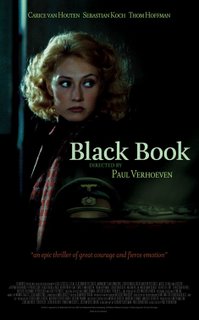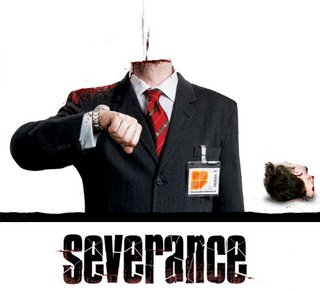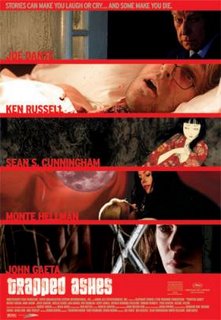TIFF 2006: "TALES OF THE RAT FINK"
 (Real To Reel)
(Real To Reel)
Canada, 78 minutes, 2006
Written by: Solomon Vesta
Directed by: Ron Mann
Cast (voices): John Goodman, Billy F. Gibbons, Anne-Margaret, Jay Leno, Paul LeMat, Matt Groening, Dick Smothers, Tommy Smothers, Brian Wilson, Tom Wolfe
For those who equate Canada’s austere documentary tradition only with such po-faced subjects as butter churning in Black Creek Pioneer Village or the emerging career of young Paul Anka, the films of Toronto-based Ron Mann must pulsate across the screen like a Rochdale College acid flashback. With “Comic Book Confidential”, “Twist”, “Grass”, and “Dream Tower” (which was all about Rochdale College!) Mann has celebrated subjects maligned, misunderstood, or just plain forgotten—unlike the PBS moppet Ken Burns, his history of the 20th century is written in the margins.
“Tales Of The Rat Fink” is his whimsical valentine to anyone whoever pinstriped a hog, airbrushed a t-shirt, or built a Revell model kit, but even the most unenlightened viewer--who may have glimpsed a certain hideous green rodent emblazoned across some mallrat’s skateboard--will be enchanted. With its breakneck pace crammed into a barely-feature-length running time, there’s so much coming at you that when it’s done, you’ll swear you smell exhaust fumes.
One-time teen art and auto shop geek Ed "Big Daddy" Roth was a true original, and arguably (but who would?) as much a founding father of American counter culture as Timothy Leary or Ken Kesey (Tom Wolfe, who praised Roth in “Kandy-Kolored Tangerine-Flake Streamline Baby”, appears here) whose body of work would comprise what J.G. Ballard has termed “invisible literature”. A “garage artist” before the term even existed; Roth saw every automobile chassis as a potential canvas. He invented the unique style of “pinstriping” paint jobs on his friend’s vehicles and would soon find his Bell, California hobby erupting into the “Kustom Kulture” craze and spawning the entire hot-rod movement.
Teaming up with Von Dutch and Bud "The Baron" Crozier, Roth’s would get crazier, incorporating monster art and more outré shapes into his pioneering fiberglass bodywork. Roth loathed Walt Disney’s safe, status quo family fare and in response created the anti-Mickey in the form of odious, snot-coloured Rat Fink, the Grand Poobah of outcasts, the renegades, and the fearlessly weird (who would eventually eclipse the popularity of his white-gloved nemesis). At a time when merchandising was a rare thing—save for the odd Viewmaster reel or Gold Key Comics tie-in—Roth spun off his unique designs into t-shirts, posters, and a series of hugely successful model kits that had his bop-eyed grotesqueries crammed into equally misshapen hotrods (“The Beatnik Bandit”, “The Outsider”, “The Drag Nut” to name but a few…).
The kick of Mann’s ephemeral spelunking is that we’re never subjected to a cold, academic clip reel interpolated with weepy testimonials—we’re always on board to share to his process of discovery. This one’s a talking-head-free zone, save for Roth’s own disembodied noggin that periodically floats in and out of the shindig like a goofy, goateed “Zardoz”. And as expected, Mann’s research crew has unearthed more rare vintage video to put YouTube to shame, capturing Roth from his earliest garage experiments, to his very public jesting as geek guru “Mr. Gasser” in TV spots and early music videos (he had his own successfully novelty act), to home movies of his public appearances right up until his death in 2001, when he was still working on new designs and yukking it up with a new generation of fans.
John Goodman voices Big Daddy in the first person and his affable, unpretentious readings compliment the largely silent archival glimpses of the man of the hour-and-a-quarter. Additional celebrity voices anthropomorphize an array of Roth’s most famous custom autos—it’s an overused motif that grates mighty fast (Mann admits he was inspired by “My Mother, The Car”!). But it’s a minor misstep and really quite sweet that Boomer icons like Ann Margaret, the Smothers Brothers, seminal Beach Boy Brian Wilson and “American Graffiti”s Paul LeMat took the time to honour such an oddball request.
A special salute must be given to the wildly-creative animated collages—based on original “Rat Fink” art--which were created in Flash by Toronto-based Michael Roberts, whose digital-DIY-resourcefulness would’ve surely impressed his subject. The Link-Wray-on-overdrive guitar licks of Toronto’s The Sadies provide suitable accompaniment.
By all accounts, Roth was extremely serious about his art and lamented the fact his creations, while profitable, reached and touched millions and yet were never deemed worthy of the respect awarded to so much of the “fine art” in museums that left him cold. But as Wolfe wrote about him: “"He's the Salvador Dali of the movement -- a surrealist in his designs, a showman by temperament, a prankster”. Even after Roth had renounced Kustom Kulture and joined the Mormons in Utah, his fans were waiting for him when he came back. No religion could hold him—he’d accidentally founded one of his own and even in death reigns supreme as the patron saint of freaks, geeks, and the too-cool-for-school everywhere.
Robert J. Lewis
TIFF 2006


















